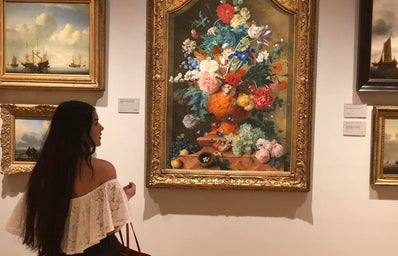AI art has become increasingly popular in mainstream media, with programmed technology able to create art that is sometimes indistinguishable from its man-made counterparts. Still, it begs the question of whether computer-generated art can be creative or evocative of emotion. There is of course a certain amount of human input into the final result. This is especially clear with a recent AI portrait sold by a French collective for $432,500. While the image, titled Portrait of Edmond de Bellamy, was fully AI-generated, it was members of the collective who selected 15,000 portraits from 14th-century to 20th-century art. Many parallels have been drawn between the merit of AI art and photography. Both have a certain amount of creativity and control over the final product, but so much is beyond the creator’s control. Of course, photography is now respected for the valid art form that it is, but upon its inception, it was seen as more of a technical skill.
AI art and technology have now moved onto social media, especially TikTok. A recent trend allows users to enter a photo and have it turned into an abstract AI-generated image. Users find this feature extremely entertaining, and even practical, as the rendered image is often interesting. There is not the same discourse on social media about whether creativity plays a part in the creation of AI art. When money and critical analysis are taken out of the picture, it’s easier to see AI as a cool form of technology, without having to wonder what merit its creations have. Individual users don’t care much about whether there is thought and identity behind the creations, as this is not their intended purpose.
Still, we don’t know how AI reaches the conclusions that it does. Unlike a line of code that a programmer uses to generate a specific output, there is much more mystery to AI. Information is input and processed to output a result, however, we currently have no way of knowing what happens in between the input and output. In the case of art, it creates an interesting debate on the value of these creations, and whether they demonstrate creativity or skill. However, this debate becomes much more important and complex when we start to think of other practical applications of AI. In the future, these technologies could be used in the medical field or even the judicial system. An AI system can be fed hundreds of thousands of medical documents and retain information better than any doctor ever could. Still, without a human element, we can’t know how it reaches its diagnosis or makes split-second decisions. This is what makes so many uncomfortable and weary about this revolutionary technology, as while it can learn practical information and mimic it, it does not understand humanity.


